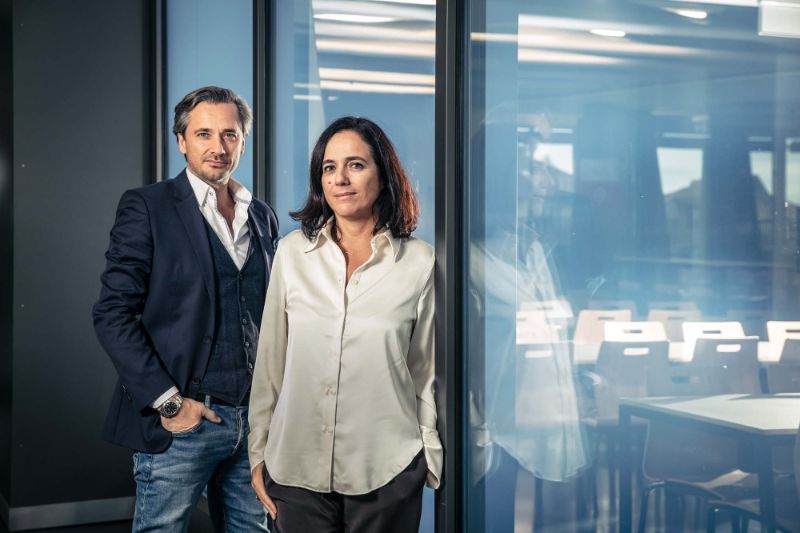How to trigger nerves and generate headlines
It’s not that often that sensational scientific news is also easy to understand. In spring 2023, an announcement of this kind went around the world from Lausanne: scientists had developed a technology that allows paralysed people to walk again!
The two researchers – Jocelyne Bloch, Professor at the University of Lausanne (UNIL) and Grégoire Courtine, Professor at EPFL – both of whom are also adjunct professors at EPFL and UNIL, respectively, and work at Campus Biotech in Geneva, were finally able to announce the breakthrough of their brain-spinal cord interface. Initial tests were promising, but now the digital miracle has demonstrated its effects on a person for the first time: The implant successfully bridged the spinal cord injury in the cervical spine of a patient who was paralysed after a cycling accident. The patient was able to stand, walk and even climb stairs again.
The interdisciplinary journey towards spinal cord healing
How can something like this be made possible? By taking a very interdisciplinary approach, the two scientists emphasise. And that doesn’t just mean combining neurological and surgical expertise, which they each bring to the project, but also in-depth AI knowledge, knowledge in the field of robotics, and a range of skills that are not directly related to specialist knowledge.
As a renowned neuroscientist and neurosurgeon, Bloch regularly receives calls from researchers “with a brilliant idea,” she says. But it takes more than that – that little bit extra – to turn an idea, however brilliant it may be, into a functioning medical project. She immediately sensed this “small but critically important extra” in Courtine: his energy and, not to be underestimated, his organisational talent. She was “immediately enthusiastic” about the real prospect of helping people with injured spinal cords after early successes in animal experiments. Courtine adds that it also takes a lot of perseverance – after all, he has been working on this idea for around 20 years. “And also a good dose of luck.”
The contact between Bloch and Courtine was established by former EPFL President Patrick Aebischer, and he had the right instinct: The collaboration between the two scientists is already well advanced, and yet this may only mark the beginning of a much more important project. There are many indications that the stimulation technology has finally been perfected – even if Bloch and Courtine emphasise that it is still in the trial phase and that the safety of the procedure first needs to be validated.
Promising advances in Parkinson's treatment
Following the headlines in spring 2023, an article was published in Nature in October in which the two scientists announced that the technology was also showing good results in Parkinson’s patients with walking difficulties. “There’s more in the pipeline,” notes Courtine, “I can’t reveal too much yet, but we’re on the trail of special neurons that have a kind of repair function and that also respond to electrical stimulation.”
Incidentally, this next significant discovery had already been hinted at in the first Nature article in the spring. The walking training with the digital bridge appeared to help the patient to gradually regain lost neurological functions. The researchers registered remarkable improvements in his sensory and motor skills, even when the implant was deactivated. This suggests that new nerve connections had formed as a result of the stimulation.
Pioneering collaboration: Merging medicine with technology
Courtine says that, as a physicist, he quickly realised that he didn’t want to do pure basic research, but rather something application-related that touched on a real scientific problem. This led him to neurological research, and so the idea of bridging damaged nerve connections using the latest methods began to grow. Developing an idea in the laboratory is one thing, but successfully integrating it into a human body so that it results in a real patient benefit is quite another.
“I would say we complement each other quite well,” says Bloch, who contributes the medical expertise and has the “boldness” to try the untested in the operating theatre, as Courtine puts it. However, the project not only offers her the opportunity to carry out pioneering clinical work, but also enables her to learn a lot about how neuronal connections function and, more importantly, about their regenerative capacity. So it could well be that Lausanne is currently not only demonstrating the potential of hightech medicine made in Switzerland, but also starting a new chapter in the history of neurology.
